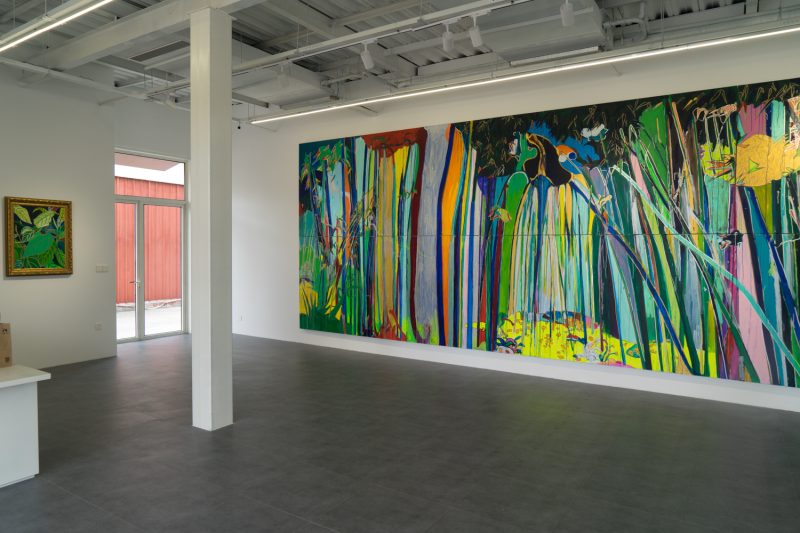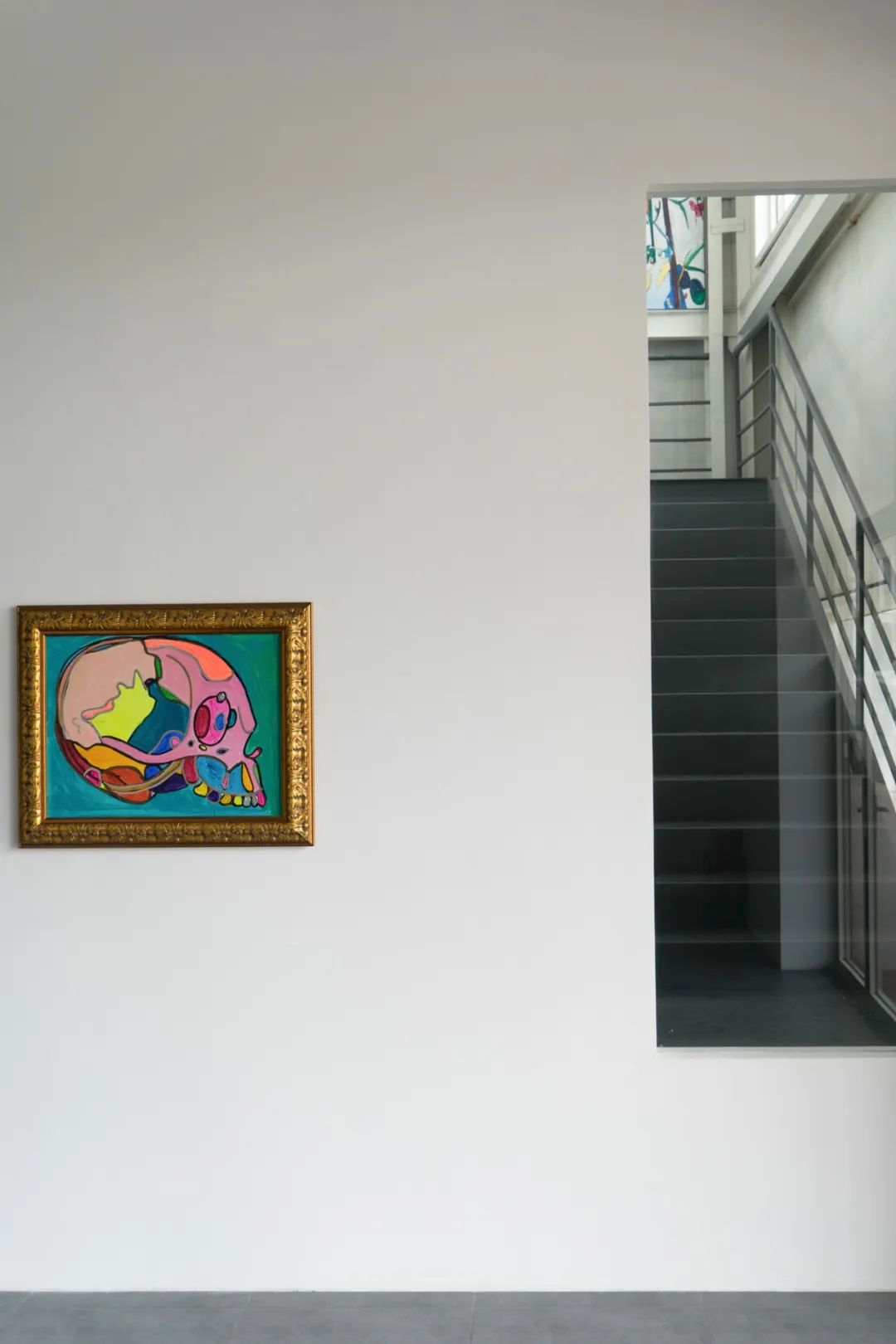
Opening Hours
Tuesday to Friday 12:00-20:00 (Last admission: 19:30)
Saturday and Sunday 12:00-21:00 (Last admission: 20:30)
Closed on Mondays
The Train Garden is open to the public every day
Tuesday to Friday 12:00-20:00 (Last admission: 19:30)
Saturday and Sunday 12:00-21:00 (Last admission: 20:30)
Closed on Mondays
The Train Garden is open to the public every day
111 Ruining Road, Xuhui District, Shanghai
021-33632872
info@startmuseum.com
Even for those unfamiliar with art, Lou Shenyi’s paintings are extremely recognisable — the pure and vivid colours, arbitrary and unrestrained lines, as well as familiar and simple themes all together create a pleasant and dynamic entrance for viewing. The selection of Lou Shenyi’s solo exhibition as the starting point for Start Museum’s “Genealogy Study of Artists” project seems to set a free and expansive atmosphere for the whole project — just as the artist himself emphasised that innocent children and senior audiences are equally invited to his world.
Lou Shenyi graduated from the Mural Painting Department at the Central Academy of Fine Arts, but this educational background is rarely mentioned in almost all discussions of his career as a contemporary artist. In the Genealogy Study of Artists exhibition “Lou Shenyi: Pleasure”, the artist starts the exhibition with Bamboo Grove (2018), with a huge volume and a new approach to painting, re-emphasising the grand fresco visuals. The artist fills the canvas with highly pure and saturated colours without grey, makes the sparse thin ink bamboo lively and fantastical, revealing a powerful tension between virtual, flat and exaggerated vision. The bamboo is outlined with thick black border lines made with marker pen. Without complex spatial calculations or careful compositional manipulations, the boldness of the brushstrokes reflects the artist’s strong confidence in the painting, which exudes a sense of extreme pleasure and self-complacent in the painting process. Bamboo Grove (2018) can be seen as the artist’s active seclusion towards the fiery reality, his intension is to maintain a certain spiritual commonality with ancient Chinese literati paintings – Lou dialogues with the painting, finding himself in this repeated deliberation and thus achieving the transcendence of the object and expressing its “Yi Qi (will and spirit)”.

In his paintings, Lou Shenyi invokes a large number of intellectual symbols of popular perception, such as plum, orchids, bamboo and chrysanthemums, Buddhist scriptures, court paintings and so on. Since these subjects have been presented repeatedly over the centuries, a set of connotative references has already been fixed, the artist is no doubt familiar with these rules. In the trend of inventing newer and more modern iconography, these subjects, once elegant as a sentimental object for scholars, has now been downgraded to a low-end antique as well as television background wall. Lou Shenyi’s choice to retrace and confront this most popular visual symbol is not only a dismantling of his own accumulation, but also a provocation to the powerful institution of literati, religion and academia that they represent. It is similar to the chivalrous heroes in martial arts novels who “disarm themselves” to practice their ultimate moves. Taking the work Colourful Bamboo (2018) as an example, its motif inherits the bright bamboo grove in Chinese painting, yet mounted with a cheap classical gold frame. This collage completely shatters the “beauty” of flamboyant colours and classical models, breaks the elegance of this traditional symbol and provides a rare “sinking” aesthetic.
Among all the motifs, peach comes from the heavenly banquet of the Journey to the West – it is the peach that Monkey King could not resist stealing, the immortal peach of longevity as well as the big breast and wide hip for fertility worship. In the work Lust (2018), the peach is sumptuous and moist, its seductive colours and sleek contours carry a composite erotic projection. The essential relationship between eroticism and death is stated by Georges Bataille in The tears of Eros: “It is nonetheless true that the animal, the ape, whose sensuality at times becomes exacerbated, knows nothing of eroticism. And this is precisely because it lacks all knowledge of death. To the contrary, it is because we are human and live in the somber perspective of death that we know this exacerbated violence of eroticism.” The lurid skeletons revealed beneath the peach leaves of Feast (2018) amplifies the erotic tension with the darkness of death, completing the depiction of the intense violence of death through colours of higher saturation and a festive, ecstatic temperament. The highly saturated colours, like what we see under the intense sun at midday, conceal the most intense darkness.
With superhuman courage, Lou Shenyi’s works attempt to break through the shadows of collective fear. Throughout his oeuvre, from the powerful statue of David, peach-holding Monkey King, to the drunk Liu Ling in the snowy night, the unrestrained desires and dreams of mankind are condensed on the canvas, revealing a collective state of involuntariness and wildness. As soon as he made his debut, Lou’s works were intentionally free from the constraints of post-modernism theories imposing on contemporary painting. His portraits of living beings gradually enter the stage like characters in a martial arts novel. For instance, the bloodied fists of a large boy in Big Man (2005) and the wounded role models in Boy on Classroom Duty – Idol (2005), etc., responding to violence with violence, presenting a destructive power of punk. Later on, follows with the shift in the overall spiritual climate of society, “joyfulness” has become the main theme of his paintings and the main weapon of confrontation.
Where does this joy come from? Lou Shenyi is not an optimist who dwells on sentimental things, the core of his spirit tends to be Dionysus – as Nietzsche proposed to achieve the autonomy of life with the “will to power”, it is an important proposition for his works to withstand and answer the “violence” of fate. Through simple and joyful scenery, the artist lures the viewer into a wilderness of fantasy landscapes, where the insight into the truth is not hidden. The Dionysus spirit in his works comes from this joyful nature, transcending the empty debate between optimism and pessimism, while confronting the uncertain destiny and the fears shared by mankind. The painting is at the same time a manifestation of the artist’s personal spiritual world. Its mood of ‘joy’ is born out of conquering the pain and darkness. The freedom of spirit pursued by the artist is bursting forth – listen, in the scene of “Lou Shenyi: Pleasure”, the brushstrokes of the Seven Sages of the Bamboo Forest and Beethoven’s Ode To Joy of are stirring together.